¶ Guide to Using Yarbo's Antenna Mount for Optimal Year-Round Performance
To keep your Yarbo operating at peak performance throughout the year, it's important to understand which antenna mount is best for different seasonsband situations. Here’s a quick guide on when to use the low and high antenna mounts, along with the reasons behind each choice and practical scenarios.
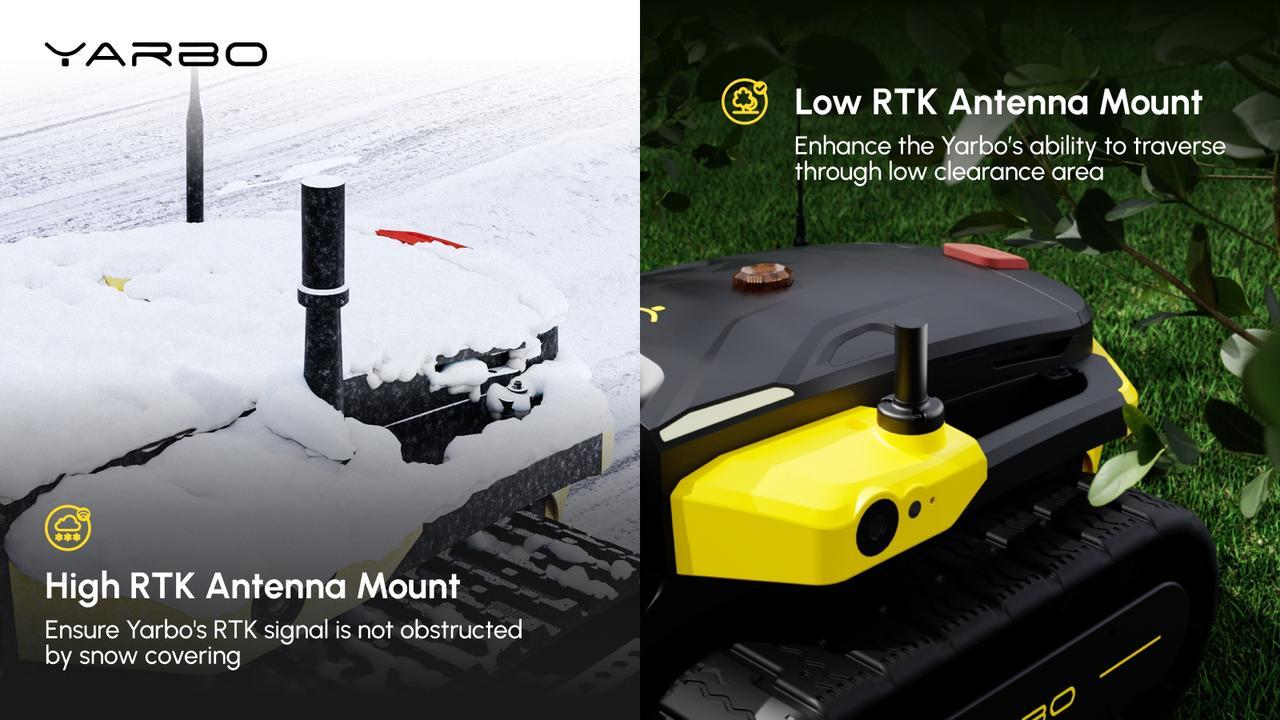
¶ Summer: Use the Low Antenna Mount
¶ When to Use
In the summer, your yard may be full of lush vegetation like shrubs, flowers,
and other obstacles, such as trampolines or low-hanging branches. During this
time, the low antenna mount is the optimal choice.
¶ Scenario
Imagine Yarbo navigating your yard, trimming the grass, or edging around flower
beds. The low mount keeps the antenna closer to the ground, which reduces the
chances of snagging on low branches or getting tangled in dense vegetation. This
allows Yarbo to move smoothly through tight spaces without interruptions.
¶ Reasoning
The low antenna mount keeps Yarbo's height minimal, allowing it to efficiently
navigate around plants and yard decorations while maintaining a strong signal. By
lowering the antenna, you reduce the risk of interference from summer foliage,
enabling smooth operation.
¶ Winter: Use the High Antenna Mount
¶ When to Use
Winter presents unique challenges, especially due to snow accumulation. Snow
can easily block a low-mounted antenna, which impacts Yarbo’s signal reception.
To address this, use the high antenna mount during snowy conditions.
¶ Scenario
Picture a snowy day with Yarbo working to clear the snow. With the high mount,
the antenna stays above the accumulating snow, ensuring Yarbo maintains a clear
signal even when the ground is covered.
¶ Reasoning
The high mount lifts the antenna above the snow, keeping the signal strong and
unobstructed. This setup ensures Yarbo performs effectively during winter tasks
like snow removal, without interference from snow buildup.
¶ Quick Guide to Choosing Your Antenna Mount
¶ Low Mount
Use during summer or in environments with dense, low-lying
vegetation or obstacles. This mount helps Yarbo avoid getting caught on branches
and improves maneuverability around plants and garden decorations.
¶ High Mount
Use during winter when snow is present. The high mount keeps the
antenna above the snow, ensuring consistent signal reception and optimal perfor
-mance in snowy conditions.
¶ Correct Setup
The lawn mower must be installed with two low RTK antennas.
The high RTK antenna mounts are designed for the snow blower or other specific devices and should NOT be used on the lawn mower.
Using the wrong antennas may result in unstable GPS signals, poor RTK performance, or malfunction.
¶ How to Identify
- Lawn mower : Low RTK Antenna Mount + RTK Antenna
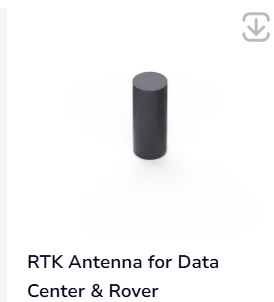 |
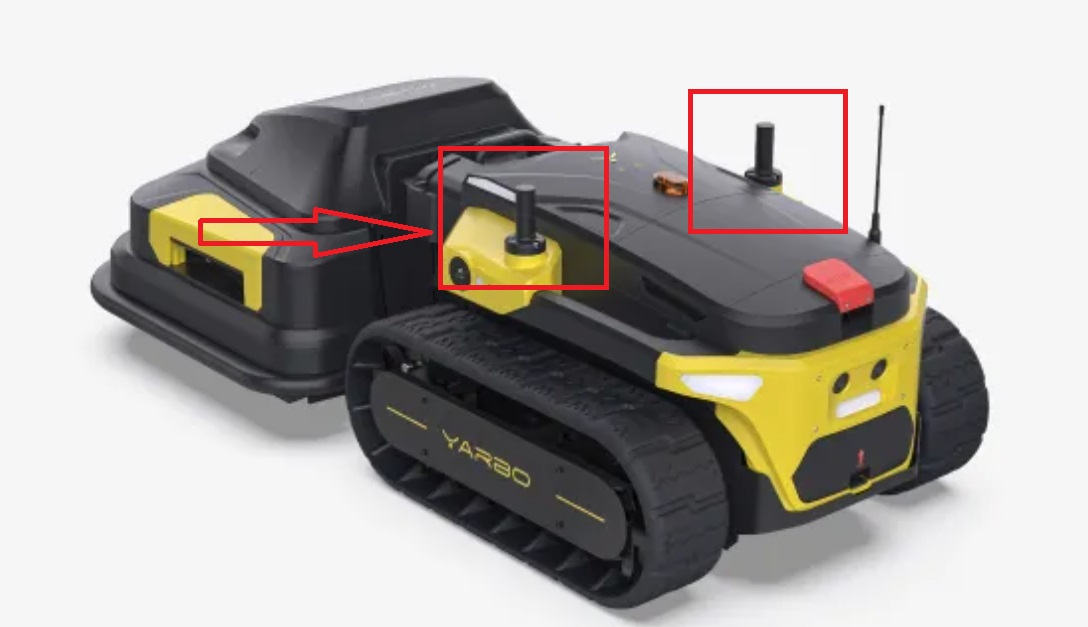 |
- Snow blower : High RTK Antenna Mount + RTK Antenna
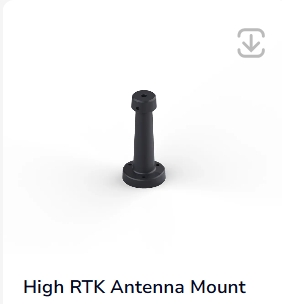 |
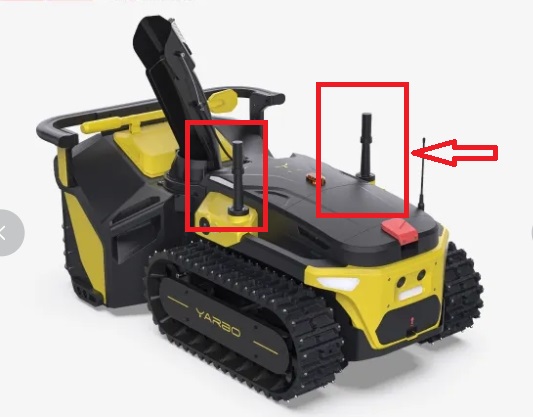 |
Always double-check the device model and antenna type before installation.
¶ Recommendations
- Review the parts list and packaging before installation.
- If unsure, take a photo or contact tech support for confirmation.